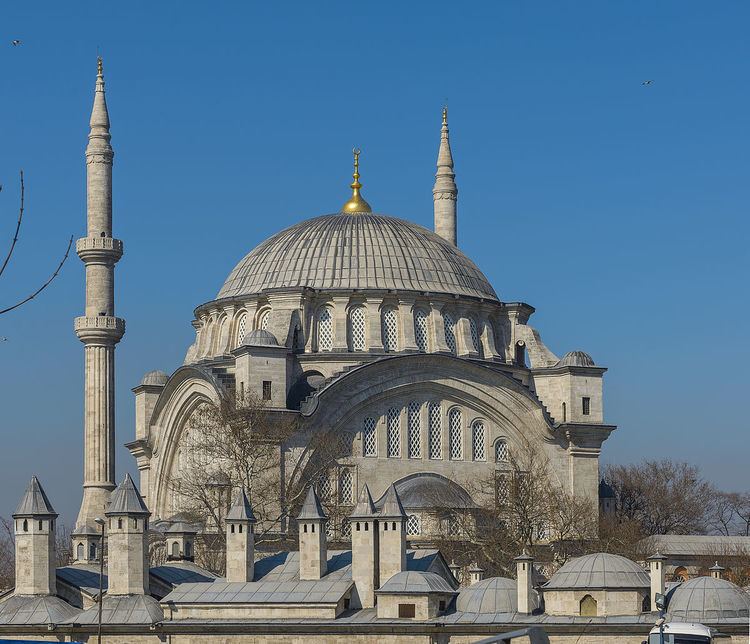Architectural type Mosque Completed 1755 Opened 1755 Architects Mustafa Ağa, Simon Kalfa | Affiliation Islam Groundbreaking 1749 Height 44 m Phone +90 212 512 23 20 | |
 | ||
Similar Bayezid II Mosque, Grand Bazaar, Şehzade Mosque, New Mosque, Laleli Mosque | ||
The Nuruosmaniye Mosque (Turkish: Nuruosmaniye Camii) is an Ottoman mosque located in the Çemberlitaş neighbourhood of Fatih district in Istanbul, Turkey.
Contents
Istanbul nuruosmaniye mosque
Architecture
It is considered one of the finest examples of mosques in Ottoman Baroque style. It was built by architects Mustafa Ağa and a Greek minority architect, Simeon Kalfa on one of the seven hills of Istanbul. It was commissioned from the order of Sultan Mahmut I beginning in 1748 and completed by his brother and successor Sultan Osman III in 1755. The architects adopted Baroque architectural elements, the mosque is also distinctive with the absence of an ablution fountain (Turkish: şadırvan). It was named Nuruosmaniye Mosque, meaning "The light of Osman", after Osman III, but also because of its many windows which lets a lot of light inside the mosque's hall. Nuruosmaniye Mosque is located near the entrance to the Kapalıçarşı (Grand Bazaar), Column of Constantine and the historical Gazi Atik Ali Pasha Mosque.
The prayer hall is covered by a single dome 25 metres (82 feet) in diameter, it has two minarets with two balconies. The colonnaded portico has a half circle plan, unique for Ottoman mosques. The height of the dome is 43.50 metres (142.7 feet) from the floor level. In the backgarden there is a Türbe (tomb). The mosque is part of a larger complex (Külliye) consisting of a sebil (fountain), medrese, (Islamic school) consisting of 20 domed rooms and one large classroom (dershane), imaret, and the library, which today is part of the Süleymaniye library and contains personal collections of Mahmud I and Osman III with a total of 7,600 volumes of whom 5052 are manuscripts.
